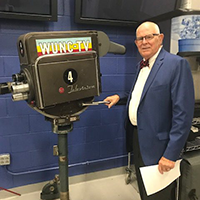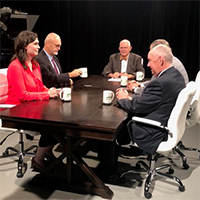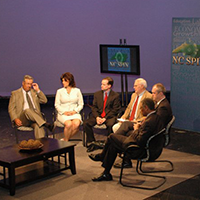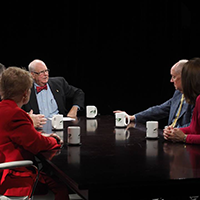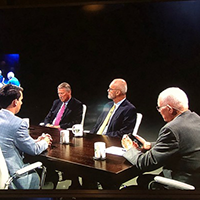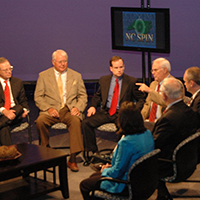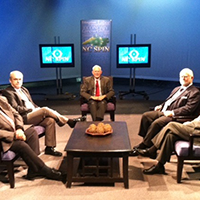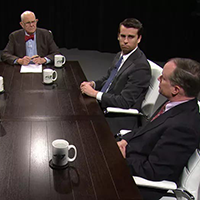Jason Thiel, the longtime president of the Downtown Winston-Salem Partnership, has spent more than 20 years trying to guide the city center through waves of change. And like anyone who’s worked downtown that long, he knows the challenges all too well. And he’s searching for real, workable solutions.
These aren’t just Winston-Salem issues. Downtowns everywhere in North Carolina are going through the same thing. Walk around Asheville, Greenville, Durham, or Fayetteville and you’ll notice it right away — people don’t always feel safe, parking is frustrating, and a lot of office space is sitting empty. With fewer workers coming in daily, the steady foot traffic that once kept restaurants and shops alive just isn’t present the way it was prior to the pandemic.
People want the basics covered first. They want to park their car, grab dinner, or ride the bus home at night without feeling uneasy. If downtown can’t offer that kind of comfort, it’s hard to get folks to show up — no matter what new restaurant or venue opens.
Right behind safety is transportation. How easy is it to get into downtown? And once you’re there, where do you park your car? Those simple, practical things often decide if someone heads downtown or just visits a spot closer to home for a night out.
Then there’s the empty storefronts. Nothing drags on a street’s energy more than dark windows and “for lease” signs. It’s a clear sign of how much the local economy has shifted. Empty windows send the wrong signal. Jason and I talked about ideas like pop-up retail, office-to-apartment conversions, and more city support for small businesses willing to take a risk. Charlotte, Raleigh, Salisbury — they’re all having similar conversations. When spaces are active, they create energy. When they sit dark, they drain it.
Restaurants and events are what keep a downtown alive. They bring people out; they fill the streets; they make the place feel fun. But right now, a lot of those businesses are under pressure. Costs are rising, workers are scarce, and consumer habits are constantly evolving.
But no city center is fully effective without spots to gather, eat, and play. That’s why capital projects like Winston-Salem’s new amphitheater, scheduled to open in 2026, matter. They give people a reason to visit downtown — and more importantly, a reason to stick around once they arrive.
The thread that ties all of this together is simple — incentivizing more people to live downtown. Residents make the difference. They walk the streets at all hours, which make places feel safer. They eat in the restaurants, shop in the stores, and give transit systems a steady base of riders. They create the demand for things like a grocery store, which so many downtowns still lack.
And here’s the other side of it — density doesn’t just help businesses, it helps the city too. Public services are easier and cheaper to provide when people live close together. Trash pickup, police patrols, utilities — it all works more efficiently when the community is dense rather than spread out. That’s why encouraging downtown living isn’t just about lifestyle or design. Moreover it’s about making cities stronger and more sustainable.
So where do we go from here? We need to recruit more employers who are willing to locate downtown with employees working in office. We need to keep investing in tourism and cultural events that attract people near and far. We need public and private leaders willing to take chances together, whether that’s on new housing, shared parking, or adaptive reuses for historic buildings. And perhaps most of all, we need local residents to fall back in love with their own downtowns.
Because in the end, a downtown isn’t just a business district. It’s where people from every walk of life cross paths. It’s where a city shows its character and tells its story. It’s where community gets built.
North Carolina is growing fast, but growth by itself won’t guarantee strong communities. Without healthy downtowns, our cities risk losing the very places that hold them together. Winston-Salem’s story is still being written, as is the story of many towns across this state.
I believe the future of North Carolina runs straight through its downtowns. That’s where energy begins. That’s where vibrancy lives. And that’s where communities turn into something more than just a collection of neighborhoods — they become a city.
